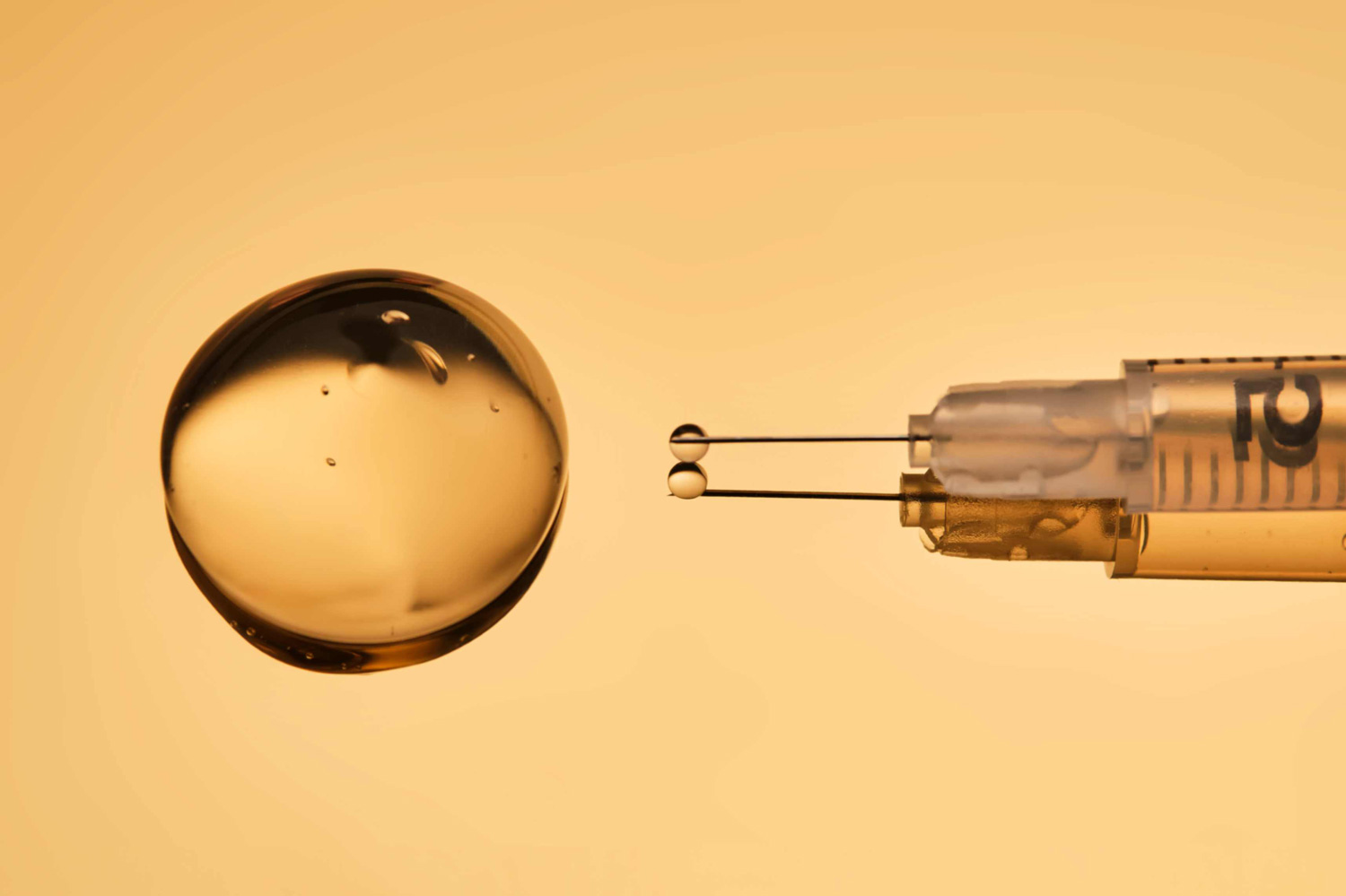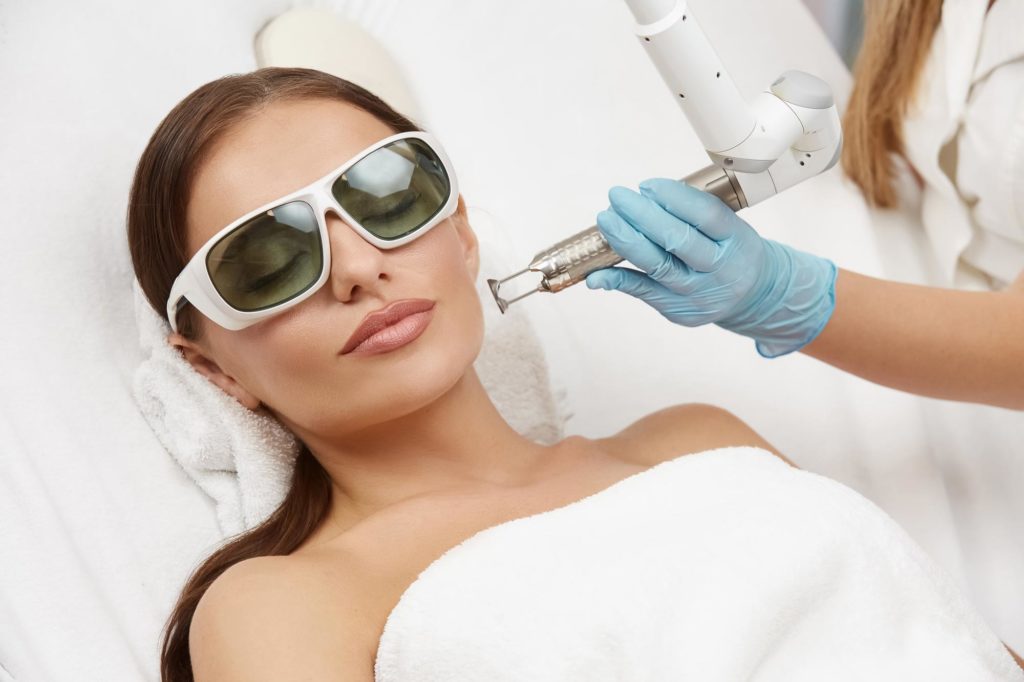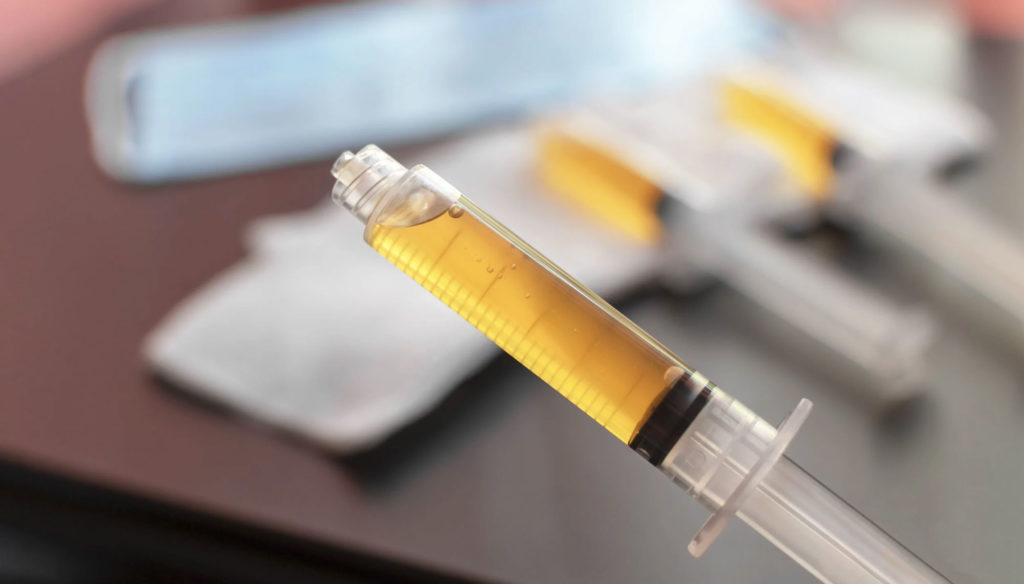Introduction
Most botulinum toxins on the market require dilution by the practitioner.
This leaves room for tailor-made dilution, but for that you need to know both the recommendations and the effects of dilution on the toxin. As always, understanding allows you to work correctly. To do so, you also need the right training.
Botulinum toxins on the market
Botox® / Vistabel®
- International name: OnabotulinumtoxinA
- Laboratory: Allergan (AbbVie)
- Country: Worldwide
- Indication: Aesthetic and therapeutic
- Recommended dilution: 100 units in 2.5 mL unpreserved saline solution
Dysport® / Azzalure®
- International name: AbobotulinumtoxinA
- Laboratory: Ipsen (Dysport), Galderma (Azzalure)
- Countries: Europe, USA, Asia
- Indication: Aesthetic and therapeutic
- Recommended dilution: 500 units in 2.5 mL unpreserved saline solution
Xeomin® / Bocouture®
- International name: IncobotulinumtoxinA
- Laboratory: Merz Pharma
- Countries: Europe, USA
- Indication: Aesthetic and therapeutic
- Recommended dilution: 100 units in 2.5 mL unpreserved saline solution
Jeuveau® / Nuceiva®
- International name: PrabotulinumtoxinA
- Laboratory: Evolus / Daewoong
- Countries: USA, Europe
- Indication: Aesthetic use only
- Recommended dilution: 100 units in 2.5 mL unpreserved saline solution
Daxxify®
- International name: DaxibotulinumtoxinA-lanm
- Laboratory: Revance Therapeutics
- Country: USA
- Indication: Aesthetics
- Recommended dilution: 100 units in 2.5 mL unpreserved saline solution
Letybo®
- International name: Letybo®
- Laboratory: Hugel (South Korea)
- Countries: Asia, Europe
- Indication: Aesthetic use
- Recommended dilution: 100 units in 2.5 mL unpreserved saline solution
Alluzience®
- International name: AbobotulinumtoxinA (liquid formulation)
- Laboratory: Galderma
- Country: Europe
- Indication: Aesthetics (moderate to severe glabellar wrinkles)
- Recommended dilution: No dilution – ready-to-use solution (200 units/mL)
Relfydess®
- International name: RelabotulinumtoxinA
- Laboratory: Galderma
- Countries: Europe, Australia
- Indication: Aesthetics (glabellar lines and crow’s feet)
- Recommended dilution: No dilution – ready-to-use solution (100 units/mL)
International and Speywood units
In order to harmonize practices, the various brands producing botulinum toxin express their dosage in International Units (IU). One brand, however, expresses its dosage in Speywood units: Galderma with its Dysport® and Azzalure® toxins. It is accepted that there is an equivalence between international units and Speywood units, even if this is not absolute.
Equivalence between international units and speywood units
125 Speywood units equals 50 international units. I use this example because Azzalure® vials are often dispensed in 125 Speywood units, and many other brands of toxins are dispensed in 50 international units.
For simplicity’s sake, one Speywood can be roughly considered to be equal to 0.5 international unit.
Once this equivalence has been integrated, Speywood units are even roughly converted into international units, and the logic of dilution applies in the same way.
Impact of dilution
First, a quick reminder: botulinum toxins are diluted with 0.9% Nacl saline.
Using international units, dilutions can be varied. Even if each toxin has a recommended dilution, which corresponds to the dilution used during the testing phases to obtain marketing authorizations, the impact of dilution is always the same, and understanding it enables you to find the ideal dilution for your practice.
In my opinion, the most important thing for a doctor is to understand the impact of dilution. Then, he chooses what suits him best.
You have to be fairly relaxed about dilutions. Obviously, you have to be precise, but you’re not going to throw your bottle away if you’ve put in 0.1 of a milliliter of Nacl too much.
We learn, understand and act on our knowledge, our vision of aesthetic medicine and the effect we want to achieve, within a strict regulatory framework.
To be reproducible, you need to be systematic and know the impact of your treatments on your patients, both to ensure safe treatment and, of course, to satisfy your patients.
A good practitioner is one who practices regularly and reproducibly. Otherwise, you’re a mad scientist or a failed researcher, but not a practitioner. A “practitioner practices” based on evidence-based medicine. They repeat precise, protocolized gestures in order to master them.
Broadcast
The more you dilute, the more it diffuses
It’s quite simple: saline acts as a carrier. You’ll have the same amount of botulinum toxin in a larger volume, so once injected, it will spread over a larger area.
This is a trend, and just because you dilute 2 times doesn’t mean you’ll diffuse 2 times as much, but you will diffuse a little more. This makes it possible to adapt the dilution to the treatment area and the desired effect.
The less you dilute, the more you control
Indeed, if you have a 1:1 dilution in insulin syringes, each time you push a small graduation, you will deliver an international unit to the treated area. So you need to be technically proficient to avoid pushing too many units at once. In short, it’s more precise, it diffuses less, but it requires a good command of the tool. Basically, it’s less forgiving of error, but it’s like anything else: the greater your mastery, the more precise your tools, but often less tolerant of approximation. As in most sports, for example…
Dilution and indication
As you can see, mastering dilution increases competence, the range of indications and the finesse of treatment.
There are 3 dilutions that I use regularly:
- 1 for 1 for eye treatment
- 1 for 2 for forehead treatment
- 1 for 4 for the treatment of axillary hyperhidrosis
Conclusion
As with many protocols and concepts in aesthetic medicine, a theoretical learning phase is necessary to master the fundamentals that are not taught in the various medical specialties. Once these concepts have been acquired in theory, they can be put into practice, gradually leading to specialist status.
It is therefore essential for all practitioners to be trained in aesthetic medical procedures before offering them to their patients.





